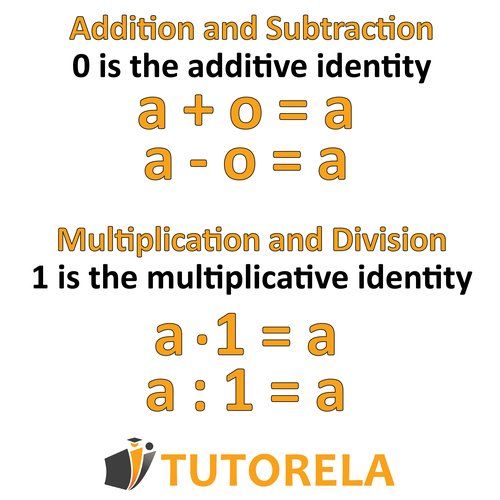The numbers and have some special characteristics when performing basic operations like addition, subtraction, multiplication, and division—including combined calculations.
In this article we will learn what they are and why they are important.

Master the special properties of 0 and 1 in arithmetic operations. Practice identity elements, multiplication by zero, and division rules with step-by-step solutions.
The numbers and have some special characteristics when performing basic operations like addition, subtraction, multiplication, and division—including combined calculations.
In this article we will learn what they are and why they are important.

\( \frac{25+25}{10}= \)
This simple rule is the order of operations which states that multiplication precedes addition and subtraction, and division precedes all of them,
In the given example, a multiplication occurs between two sets of parentheses, thus we simplify the expressions within each pair of parentheses separately,
We start with simplifying the expression within the parentheses on the left, this is done in accordance with the order of operations mentioned above, meaning that multiplication comes before subtraction, we perform the multiplications in this expression first and then proceed with the subtraction operations within it, in reverse we simplify the expression within the parentheses on the right and perform the subtraction operation within them:
What remains for us is to perform the last multiplication that was deferred, it is the multiplication that occurred between the expressions within the parentheses in the original expression, we perform it while remembering that multiplying any number by 0 will result in 0:
Therefore, the correct answer is answer d.
Answer:
According to the order of operations, we first solve the expression in parentheses:
Now we multiply:
Answer:
40
According to the order of operations, we first place the multiplication operation inside parenthesis:
Then, we perform this operation:
Finally, we are left with the answer:
Answer:
According to the order of operations, we will solve the exercise from left to right since it only contains multiplication and division operations:
Answer:
According to the order of operations, we first multiply and then add:
Answer:
12